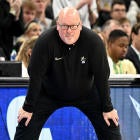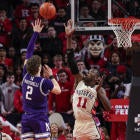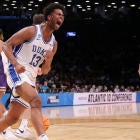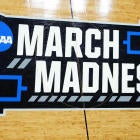An increase in minimum requirement for the NCAA's Academic Progress Rate (APR) means there are a few more schools facing postseason bans in college basketball next season than what we saw in 2013-14.
(A primer on what the APR is and how it's calculated can be found here.)
The NCAA released its APR numbers earlier than usual when the report came out on Wednesday, and here are the teams that will be ineligible to compete in postseason men's basketball play in 2015, three of which come from the Southland Conference:
Alabama State (SWAC)
Appalachian State (Southern)
Florida A&M (MEAC)
Houston Baptist (Southland)
Lamar (Southland)
San Jose State (Mountain West)
Central Arkansas (Southland)
Wisconsin-Milwaukee (Horizon League)
There are a handful of schools facing varying levels of lesser punishment related to the APR; the NCAA has three levels of enforcement. A Level One penalty means teams must reduce practice time in favor of study hours. Level Two: loss of practice time/more study hours as well as strict "academic activities." A Level Three penalty envelops levels One and Two and also can entail "financial aid reductions; additional practice and contest restrictions, coach-specific penalties (including game and recruiting restrictions); restricted access to practice for incoming students who fall below certain academic standards; restricted membership; and potential multi-year bans on postseason competition."
Here are the men's basketball teams facing certain level of APR punishment (all the teams under postseason bans are privy to this as well):
Level Three:
New Orleans (Southland)
Level Two:
Florida International (Conference USA)
Level One:
Binghamton (America East)
Cal State-Fullerton (Big West)
Charlotte (Conference USA)
Fairleigh Dickinson (Northeast)
Tennessee-Martin (Ohio Valley)
Programs must now clear a four-year APR average of 930 -- or a two-year average of 940 -- to be eligible for postseason play. This is a rise from the 900 floor that the NCAA used for most of the past decade (since APR protocol has been in effect). Schools with limited resources are given leniency on a case-by-case basis.
"The NCAA continues to work closely with limited-resource schools and Historically Black Colleges and Universities as they continue to improve the academic performance of their student-athletes," the report says.
HBCU's average APR now sits at 953, a 23-point uptick over the past three years.
Overall, the NCAA boasted improvement across the board with its APR scores. Men's basketball, specifically, is up to a 957 four-year average -- among its highest ever. Division I football came in with a 951 four-year average.
"Over the last ten years, the number of student-athletes leaving that left school ineligible has decreased more than 40 percent," per the NCAA's report.
Across all Division-I programs, every sport, there are 36 teams as of now who will miss the 2015 postseason. Last year 13 missed out.




















